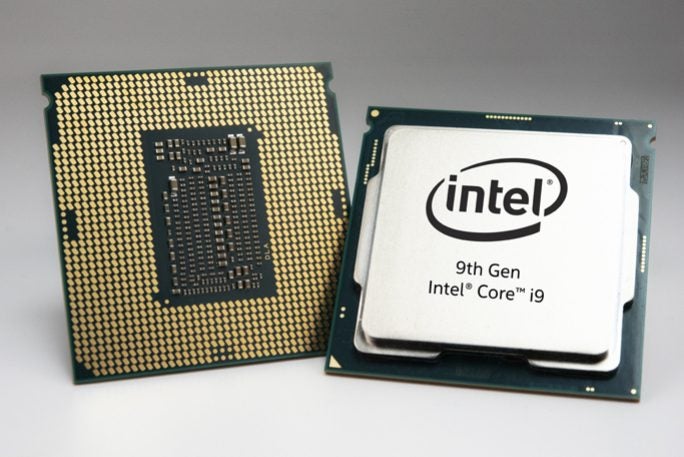How to overclock your PC

Overclocking your computer’s CPU can help to really boost your performance, which in some cases can lead to much smoother gaming on higher detail settings. Here’s everything you need to know on how to get started with overclocking.
What does overclocking mean?
Before we get started, it’s important to understand what overclocking your PC’s processor actually involves.
The processor (otherwise known as the CPU, or Central Processing Unit) is basically the brains of your computer, but most modern chipsets have a restriction placed on their performance by the manufacturer. In other words, they’re capable of running at a faster clock speed than the one they’re stuck with out of the factory.
Why impose such a restriction? Well, it’s basically a safety measure. Processors are delicate bits of tech, just like the rest of your computer’s internals. When they work at full capacity, they have a tendency to get rather hot – hence computers have internal fans to whisk away the heat, while dedicated gaming machines often use more efficient liquid cooling systems. If a CPU becomes too hot, it could become irreparably damaged, as could some of your PC’s other internal components.
Pretty much any processor can be overclocked to some degree, while a lot of gaming machines even come with built-in overclocking features; the equivalent of a nitro button on a sports car. If your computer doesn’t have this kind of feature, don’t worry – you can still indulge in some performance boosting. It’ll be a bit more effort, though.
Related: Best Gaming CPU
Should I overclock my processor?
Well, that’s your decision, but there’s a few things to bear in mind before you jump on in.
First, tampering with your CPU like this will void any warranty you may have remaining. In other words, if you break the chip while overclocking, don’t go crying to the manufacturer.
Speaking of which, overclocking can be a risky affair if you don’t know what you’re doing. It’s perfectly possible to corrupt your hardware and basically crock your computer. Or perhaps simply reduce the life expectancy.
These days thankfully a lot of chipsets come with built-in protection against heat damage, as overclocking becomes a more popular practice. These safety measures aren’t a guarantee of course, so you should still take every precaution when tinkering with your rig.
Related: Intel Core-X Series
How can I measure the temperature inside my computer?
Before starting, make sure you have a way of monitoring the internal temperature. If things get a little too toasty, you’ll want a heads up so you can immediately stop overclocking and hopefully prevent any damage.
Windows for whatever reason doesn’t offer a means of checking the heat levels, so you’ll need to download a piece of software like Core Temp. Other options are available, but that’s one of the most widely known. Just be careful during installation as it’ll try and stick some extra, unnecessary bloatware on your PC.
Of course, it’s difficult to judge what a ‘safe temperature’ for your processor is, as there’s no set limits. Even similar chipsets from the same manufacturer can show instability at completely different levels, depending on their construction. As a general guidance, your computer shouldn’t be rising far beyond 90 degrees Fahrenheit.
Related: Best Graphics Card 2019
Should I go for auto or manual overclocking?
The difference between these two options is as obvious as you’d expect. With automatic overclocking, your computer’s BIOS will make its own mind up on what the maximum clock speed of your CPU should be set at. In other words, minimal effort on your part. Don’t assume this is guaranteed to avoid complications, however.
With manual overclocking, you personally set the precise values for the maximum clock speed. Some motherboards also offer a semi-automatic option, in which you select from various preset limits.
Related: Best Gaming CPU
How do I begin overclocking my PC?
The following steps are a general overview for boosting the performance of your computer. If you have a dedicated gaming machine, chances are it will come with an easy-access overclocking feature that can be activated through an application.
Likewise, if you have an Intel platform, you can use the manufacturer’s own Extreme Tuning Utility (XTU) to get overclocking. Just download and run and you’ll have a full set of utilities for taking your CPU to its maximum limits.
If you don’t have a tool like this, your best bet is to manipulate the BIOS. The following steps will lead you through this process.
- First up, you’ll want to download Prime95. This is one of the more popular pieces of software used among overclockers to stress test their rigs, as it constantly throws calculations at the CPU.
- Open Prime95 once it’s installed and choose the Stress Testing option, followed by Blend Test, then kick it off. Monitor your system temperature using Core Temp. You’ll notice the heat rising for a few minutes, before the temperature levels off. When that happens, go to the Test menu option in Prime95 and hit ‘Stop’.
- If those temperatures are already hitting the high 80s, then overclocking your current rig isn’t a smart move. You’ll want to improve the cooling system before going any further.
- If all is well, it’s time to fiddle about in the BIOS. Reboot your PC and hit Delete to enter the main menu, before diving into the overclocking section.
- In here you should find automatic options for getting extra grunt from your chipset. If you want to try a manual option, you’ll want to find the multiplier setting and increase this by one across all cores. So if your multiplier is set to 32, boost it to 33.
- Once you’re done, save your changes and reboot your PC and you’ll be ready to commence stress testing again. When Windows is back up, repeat the Prime95 test and keep monitoring those temperature levels.
- You can keep on going back and forth, trying different settings until you find a good balance of power and stability. And if you really want to push your system, you can try messing around with the voltage levels as well.


